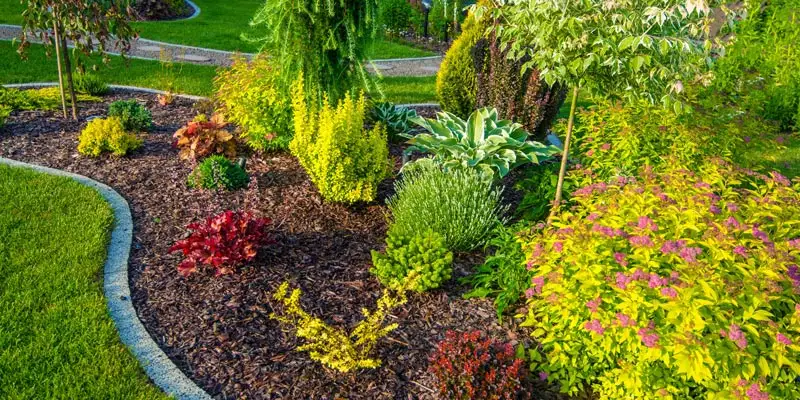The Ultimate Guide To Landscape Design
The Ultimate Guide To Landscape Design
Blog Article
Some Known Details About Landscape Design
Table of ContentsSome Known Facts About Landscape Design.Some Known Factual Statements About Landscape Design Indicators on Landscape Design You Should KnowSome Known Factual Statements About Landscape Design An Unbiased View of Landscape Design
A backyard can typically be divided right into 3 areas: public (the front lawn), private (the back yard), and solution (normally the side lawn). The place of task areas depends mainly on the kind of area, the size of area required, the kind of activity, and the preferred closeness to other activities and frameworks.The outside wall of the residence typically serves as the initial wall surface or beginning factor of an outdoor space. Inappropriate usages need to be separated, and related tasks, such as food preparation and dining, must be placed together to make the backyard much more efficient and satisfying. When utilizing hardscape to produce spaces, utilize building material comparable to that utilized in your home for continuity from your house right into the garden.
Linked rooms. Credit Report: Gail Hansen, UF/IFAS Utilizing similar hardscape features and duplicating plants draws the eye around the garden.
The Greatest Guide To Landscape Design

For emotional convenience plants are utilized as physical or suggested obstacles for personal privacy and security. Physical barriers block both the sight and accessibility to an area and include fences, walls and plant hedges. Implied obstacles, normally low expanding plants, block access but not the view (Number 9). Other functions of plants consist of cleaning up the air, stopping erosion and soil loss, preserving dampness in the dirt, and returning raw material to the dirt.
Physical and indicated barriers. Credit Score: Gail Hansen, UF/IFAS For these factors, the sorts of plants to be used (such as trees, hedges, or groundcovers) must be selected in the onset of preparation (Landscape Design). Plant types are chosen for their useful abilities so that their future function and required space can be taken into consideration at the exact same time

How Landscape Design can Save You Time, Stress, and Money.
Each plant mass remains in front of, behind, or alongside, another mass. Figure 11. Straight plant layers. Credit: Gail Hansen, UF/IFAS Number 12. Upright plant layers. Landscape Design. Debt: Gail Hansen, UF/IFAS Repeating plants within a mass and duplicating masses with comparable plants links the garden together. The individual plant attributes have to be thought about to effectively layer and mass plants.
All plant make-ups start with the main structure plants, the large, mainly evergreen history plants-such as the trees and huge shrubs. These plants separate or enframe spaces, control the size of the space, and provide the beginning factor for picking the ideal features of the 2nd layer, midground plants, for massing and infill.
Vital factors in the yard ought to be highlighted by the use of unique plants, distinctive frameworks, or garden ornaments. Marking thresholds or entrances to rooms can be done with gateways, arbors, and actions, or with using distinct and colorful plants. The kind and/or style theme of the yard will certainly usually aid figure out the crucial points and how they need to be highlighted.
Various other crucial places in the yard are prime focus, which is utilized to visually arrange a landscaped area. The kind of focal factor frequently depends on the watching point of view. Different viewpoints or viewpoints can disclose different compositions in the landscape that might require a selection of focal factors. Contrasting texture, form, size and shade will record and hold the eye.
Landscape Design Fundamentals Explained

Number 13. Plant kinds. Debt: Gail Hansen, UF/IFAS After form, appearance is the following leading attribute of a plant; rugged, medium and great appearances can be utilized for comparison and emphasis in the landscape. Kind and structure both trump color in the garden for a lot of the year. Throughout particular periods, color will be the most noticeable feature of click here to find out more the yard.
The pleasurable scent of plants, the audio of wind in the trees, the noise and texture of water, web link and the shades and appearances of sculptures, pots and garden furnishings all contribute to the experience of the garden. One information that is commonly neglected is the effect of light on the visual appeals of the plants.

The Only Guide to Landscape Design
It is essential to know the eventual fully grown size of plants so they can be positioned in the right place and spaced properly when they are set up. Offering plants area to grow is a difficulty due to the fact that the common mature dimension is typically based on ideal expanding problems and the ecological conditions of a site might create a plant to grow larger or remain smaller sized.
Report this page